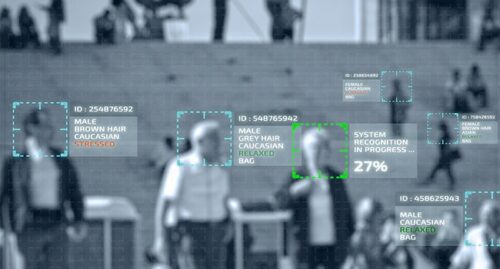
5.25.23 – Security Today -By Arthur Kull
Providing critical infrastructure protection with AI video surveillance.
In an era marked by technological advancements and increasing security concerns, the integration of artificial intelligence (AI) into video surveillance systems has revolutionized situational awareness and critical infrastructure protection.
By combining the power of advanced analytics, real-time monitoring, and proactive threat detection, AI-driven video surveillance solutions have become indispensable tools for safeguarding critical infrastructure.
This article explores the intersection of situational awareness, critical infrastructure protection, and AI video surveillance, highlighting their benefits, challenges, and potential future developments.
The protection of critical infrastructure, such as power plants, transportation systems and government facilities, is of paramount importance in ensuring the safety and well-being of individuals and societies. Traditional video surveillance systems have been in place for decades, providing a means to monitor and record activities within these sensitive areas. However, they often suffer from limitations such as human error, slow response times, and the inability to effectively process and analyze large volumes of data. This is where AI video surveillance comes into play, leveraging innovative technologies to overcome these challenges and provide enhanced situational awareness.
AI video surveillance systems are designed to not only capture and record video footage but also extract valuable insights and actionable intelligence from the data. By employing advanced analytics and deep learning algorithms, these systems can detect and identify objects, individuals and behaviors of interest in real time. For example, AI algorithms can distinguish between normal and suspicious activities, such as unauthorized access attempts, loitering, or abandoned objects, and generate instant alerts for security personnel to respond promptly.
One of the key benefits of AI video surveillance is its ability to automate monitoring and threat detection processes. Instead of relying solely on human operators to constantly monitor live video feeds, AI algorithms can analyze multiple camera feeds simultaneously, scanning for potential security breaches or anomalous events. This significantly reduces the burden on human operators and allows them to focus on critical decision-making tasks rather than being overwhelmed by the sheer volume of video data.
Moreover, AI video surveillance systems can leverage historical data and machine learning techniques to improve their detection accuracy over time. By continuously analyzing and learning from past incidents, these systems can refine their algorithms and adapt to evolving threats and patterns of behavior. This adaptive learning capability enhances the system’s ability to identify potential risks and mitigate them before they escalate into full-scale security incidents.
Another advantage of AI video surveillance is its capability to integrate with other security systems, such as access control, intrusion detection, and fire alarms. By creating a unified security ecosystem, AI-driven solutions enable seamless data sharing and correlation, allowing security personnel to have a comprehensive view of the entire security landscape. This holistic approach enhances situational awareness, enabling faster and more effective response to potential threats or emergencies.
Despite the numerous benefits, the implementation of AI video surveillance systems does come with certain challenges. One of the primary concerns is privacy. As these systems collect and process vast amounts of data, including video footage and personal information, there is a need for stringent data protection measures and compliance with privacy regulations. Striking the right balance between security and privacy is crucial to ensure public trust and acceptance of these technologies.
